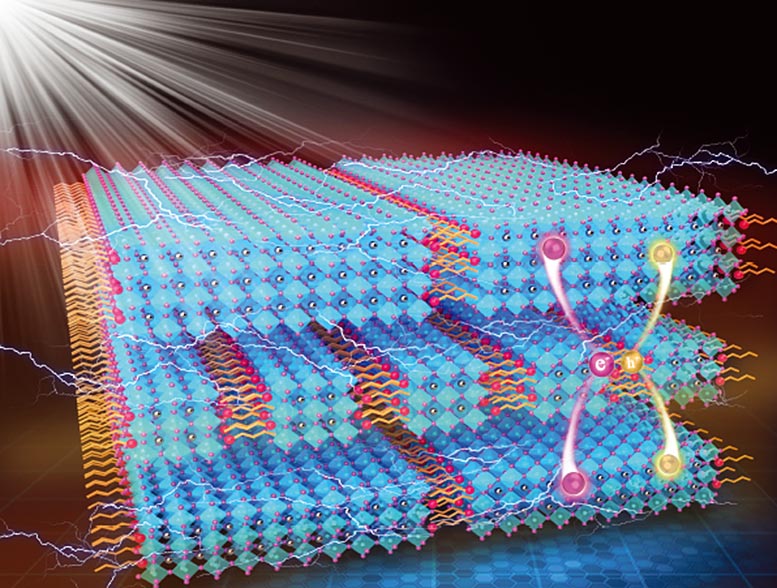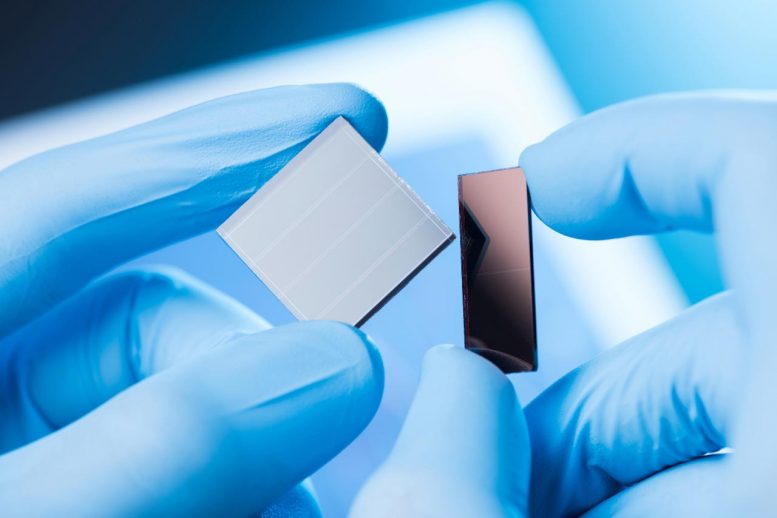Scientists Take a Bite Out of Solar Efficiency Challenge With Sandwich Model
The design of next-generation solar panels can now be improved thanks to a greater fundamental understanding of the structure within a key component.
In a world hungry for cheaper, more efficient renewable energy, Australian researchers have served up a treat.
Work led by the ARC Centre of Excellence in Exciton Science has shown that the two-dimensional (2D) thin films used in some perovskite solar cells closely resemble a sandwich. Perovskite is an exciting material at the forefront of solar energy research and design.
Previously, scientists thought these 2D perovskite films had a ‘gradient’ structure, in which certain components were found deep in the material, with other complementary elements only located nearer to the surface, like topping on a cracker.
However, in a paper published in Journal of Materials Chemistry C, members of Exciton Science based at the University of Melbourne, together with collaborators at Australia’s national science agency CSIRO and Shandong University, have provided evidence for a sandwich-like structure, in which two layers of the same type (the bread) surround one central, contrasting layer (the filling).

A graphical representation of the proposed 2D perovskite ‘sandwich’ structure. Credit: Exciton Science
This layout encourages excitons — quasiparticles important for converting sunlight to electricity — to move from the central layer to both surfaces of the film, while free carriers transport charge for collection by electrodes, helping to result in more efficient solar energy generation when incorporated into devices.
“A real problem has been understanding what the structure of these 2D perovskite solar cells really is,” corresponding author Professor Ken Ghiggino said.
“There’s been quite a lot of controversy in the literature. The advance that we’ve achieved is to find out what the real structure of these films is and how they work in a solar cell.”
2D perovskite devices are of particular interest due to their superior stability and durability relative to ‘3D’ perovskite cells. Prototype 2D devices, developed by the researchers using infrastructure and expertise at CSIRO, have demonstrated 13% efficiency.
With greater fundamental understanding of the structure, the researchers will now attempt to increase device efficiency by changing the thickness of the layers within the perovskite ‘sandwich’.
In addition to solar cells, improved 2D perovskite films have important applications in light-emitting diodes (LEDs) and photodetectors, such as video imaging, optical communications, biomedical imaging, security, night-vision, gas sensing, and motion detection.
Lead author Dr. Fei Zheng said: “This is the first time a sandwich structure has been proposed versus the conventional gradient distribution model. We think this discovery will help design and device optimization for higher performance of the 2D cells and LEDs.”
Reference: “A sandwich-like structural model revealed for quasi-2D perovskite films” by Fei Zheng, Christopher R. Hall, Dechan Angmo, Chuantian Zuo, Sergey Rubanov, Zhenchuan Wen, Siobhan J. Bradley, Xiao-Tao Hao, Mei Gao, Trevor A. Smith and Kenneth P. Ghiggino, 25 March 2021, Journal of Materials Chemistry C.
DOI: 10.1039/D1TC00606A
Funding: Australian Research Council










Be the first to comment on "Sandwich Structure Improves Efficiency of Next-Generation Solar Panels"